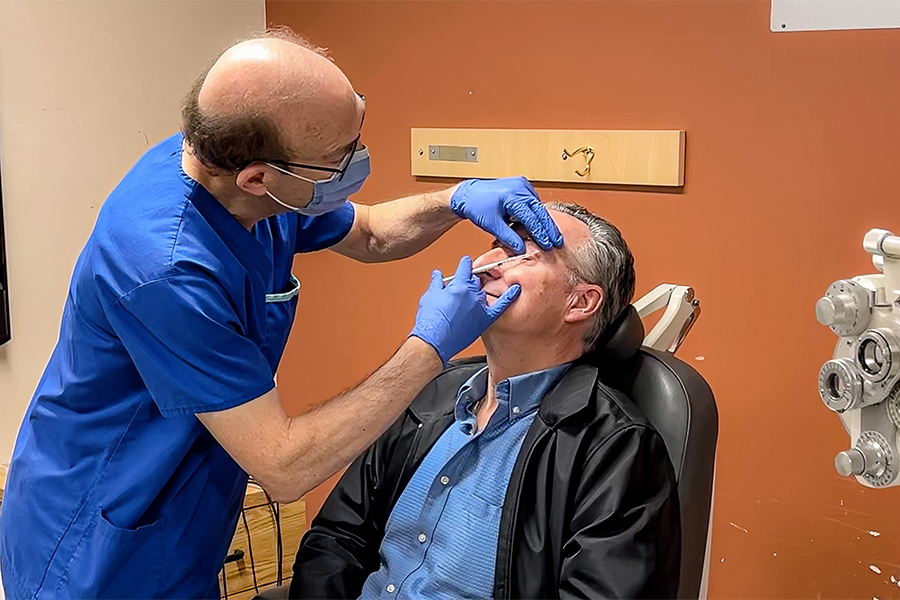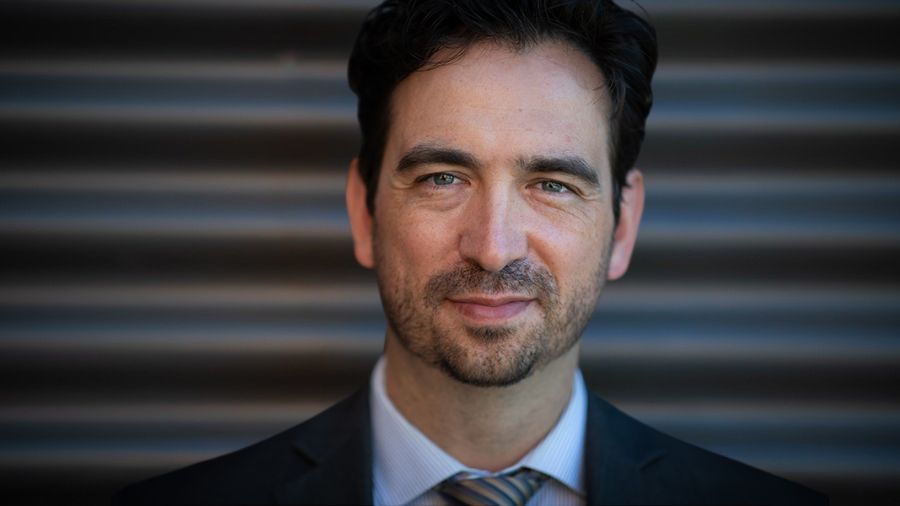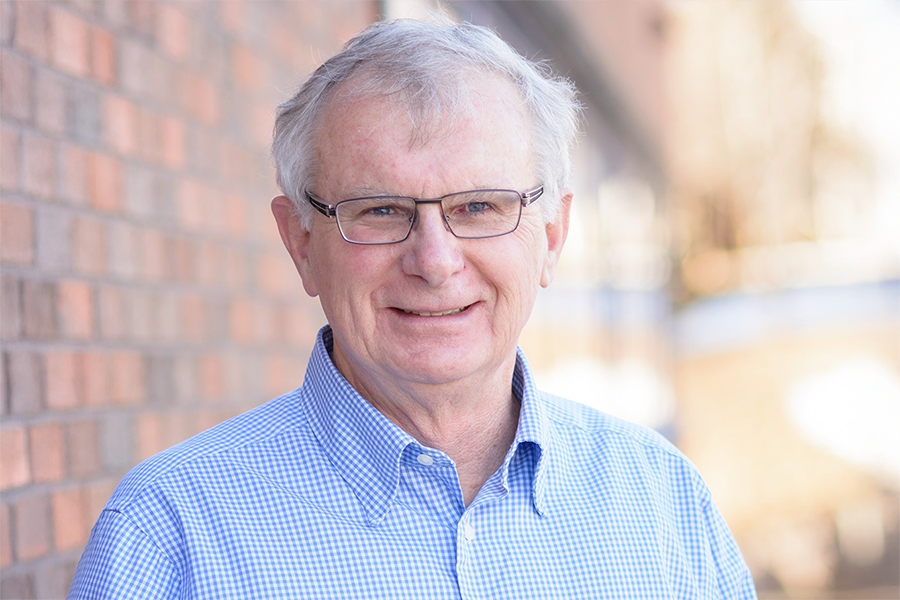“There’s so much excellent research going on at UHN, and some of it never gets translated.” – Dr. Mark Reed (L)
“The more biology and basic research we can do, the better the drug targets we find.” – Dr. Valerie Wallace (R)
By Diane Peters
What if there were a protein that could influence eye development, slow the growth of brain tumours and allow doctors to get medications more directly to the brain?
After years of trial and error in her lab, Dr. Valerie Wallace has made a series of important discoveries about Norrin, a protein involved in neurological signalling for the eye, brain and ear. Now, she’s leading the world in research on this protein that could hold the key to a range of vision-preserving and life-saving applications.
Discoveries of this sort require a willingness to keep asking questions, notes Dr. Wallace, co-director of the Donald K. Johnson Eye Institute at UHN and the Donald K. Johnson Chair in Vision Research. “Sometimes you need to be wrong in order to be right,” says Dr. Wallace. “I’m often surprised, I tell my lab. I’m very curious by nature.”
Until recently, it would have been up to other researchers or pharmaceutical companies to build on Dr. Wallace’s ideas and make products for market, such as medications.
Not any longer. Dr. Wallace is working with UHN’s Krembil Research Institute’s Centre for Medicinal Chemistry and Drug Discovery (CMCDD) to find small molecules that target Norrin – the early steps to making a drug. The CMCDD was established in 2018 to help more homegrown discoveries make it to market.
Dr. Wallace and Dr. Mark Reedare working together to make sure the basic science about this protein doesn’t get forgotten, or end up a profitable innovation for another organization.
“There’s so much excellent research going on at UHN, and some of it never gets translated,” says Dr. Reed, a medicinal chemist and scientist who heads up the CMCDD. “We can take some of these new, therapeutic targets and commercialize them right here.”
This new process has been a revelation for Dr. Wallace. Always keen to explore other aspects of science, she’s excited that Dr. Reed and his team are making it possible.
“I’m not a medicinal chemist. I don’t make drugs,” she says. I could not do this without Mark and his group.”
TWO DECADES OF INQUIRY
The work on the Norrin protein has grown out of 20 years of basic biology research in Dr. Wallace’s lab. She’s been looking at how the eye develops, specifically the retina, and her investigations into a certain neural pathway revealed some of Norrin’s unique functions.
Dr. Wallace and her team discovered that Norrin has an impact on the growth of the eye, but it also affects tumour growth in the brain. Norrin can make some deadly glioblastoma brain tumours grow more, and in other instances, slow them down. As well, for certain childhood brain tumours, Norrin affects how hospitable the environment is to tumour growth.
She compares it to how soil in a garden influences how plants flourish. “This was the first time that anyone showed that the soil was really important to how those tumours grow,” she says.
The team also observed that if Norrin was removed, key blood vessels in the brain would open. Dr. Wallace says they’ve identified a way to use the protein to open and close the blood-brain barrier, which protects the brain but also keeps medicine from getting through.
“This could be useful in the treatment of tumours, but also blood vessel problems in the eye, such as macular degeneration,” says Dr. Wallace. Having identified the profound effects that the presence – or absence – of Norrin has on blood vessels, brain tumours and the blood-brain barrier, the challenge becomes: How can this powerful protein be harnessed?
ON THE ROAD TO DRUG DEVELOPMENT
When Dr. Reed was hired in 2018 to get the CMCDD up and running, his goal was to collaborate with basic scientists at Krembil to find molecular targets from which they could develop new drugs, and offer support for getting those new treatments to market.
Dr. Reed began by knocking on doors, including Dr. Wallace’s. He was impressed by what she had already discovered about Norrin.
“This pathway she’s shown has several applications,” says Dr. Reed, who has extensive experience in drug discovery and development, including working at startups, biotech and pharma companies. As his team works to make Dr. Wallace’s discoveries “druggable,” they will collaborate and share what they learn with her group.
“We’re going to work together very closely,” says Dr. Reed. “They are involved at every single step.”
That appeals to Dr. Wallace, who knows she can play a vital role in the process. “Drugs fail because their mechanism of action is not well understood,” she notes. “The more biology and basic research we can do, [the better] the drug targets we find.”
In order to develop a drug to impact Norrin, the team needs to find a molecule that will either inhibit it, or boost it. With that molecule and a patent in hand, they can start raising money to fund more testing and even early-stage clinical trials.
From there, they could create a spinoff company that can take new drugs right to market. Dr. Reed admits this journey could take years and cost millions, but it is what’s needed to create a vibrant, local biomedical economy. Donor support has been a critical part of the journey so far. “It’s exciting to think about what we can grow right here in Toronto,” he says.
IT TAKES 12 YEARS ON AVERAGE FOR A DRUG TO GET FROM INITIAL RESEARCH TO MARKET
This article originally appeared in the recent magazine Vision: A look inside the Donald K. Johnson Eye Institute.
Photos by Tim Fraser.


